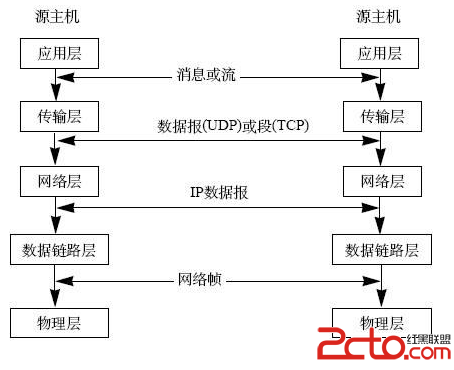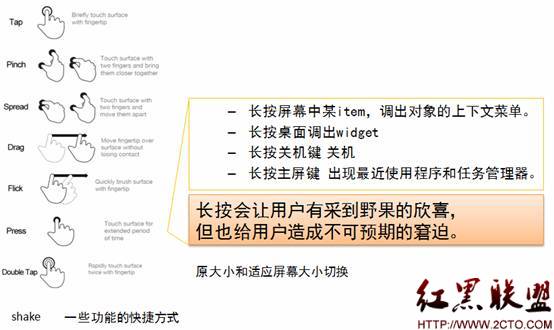在 Android 中调用二进制可执行程序(native executable )
前几天有需要在java代码中调用二进制程序,就在网上找了些资料,写点东西记录下。
Android 也是基于linux 的系统,当然也可以运行二进制的可执行文件。只不过Android 限制了直接的方式只能安装运行apk文件。虽然有NDK可以用动态链接库的方式来用C的二进制代码,但毕竟不方便。至少我们可以调用linux的一些基本命令,如ls,rm等。
第一种方法:Runtime.exec(String[] args)
这种方法是java语言本身来提供的,在Android里面也可以使用。args是要执行的参数数组。大概用法如下:
String[] args = new String[2];
args[0] = "ls";
args[1] = "-l";
try
{
Process process = Runtime.getRuntime().exec(arg);
//get the err line
InputStream stderr = process.getErrorStream();
InputStreamReader isrerr = new InputStreamReader(stderr);
BufferedReader brerr = new BufferedReader(isrerr);
//get the output line InputStream outs = process.getInputStream();
InputStreamReader isrout = new InputStreamReader(outs);
BufferedReader brout = new BufferedReader(isrout);
String errline = null;
String result = "";
// get the whole error message string while ( (line = brerr.readLine()) != null)
{
result += line;
result += "/n";
}
if( result != "" )
{
// put the result string on the screen
}
// get the whole standard output string
while ( (line = brout.readLine()) != null)
{
result += line;
result += "/n";
}
if( result != "" )
{
// put the result string on the screen
}
}catch(Throwable t)
{
t.printStackTrace();
}
以上代码执行了linux的标准命令 ls -l。执行此命令后的标准输出是在brout中。如果出错,像参数错误,命令错误等信息就会放在brerr中。
有需要的话从里面读出来便可。
第二种方法:Class.forName("android.os.Exec")
代码大概是这样:
try {
// android.os.Exec is not included in android.jar so we need to use reflection. Class<?> execClass = Class.forName("android.os.Exec"); Method createSubprocess = execClass.getMethod("createSubprocess", String.class, String.class, String.class, int[].class); Method waitFor = execClass.getMethod("waitFor", int.class); // Executes the command. // NOTE: createSubprocess() is asynchronous. int[] pid = new int[1]; FileDescriptor fd = (FileDescriptor)createSubprocess.invoke( null, "/system/bin/ls", "/sdcard", null, pid); // Reads stdout. // NOTE: You can write to stdin of the command using new FileOutputStream(fd). FileInputStream in = new FileInputStream(fd); BufferedReader reader = new BufferedReader(new InputStreamReader(in)); String output = ""; try { String line; while ((line = reader.readLine()) != null) { output += line + "/n"; } } catch (IOException e) { // It seems IOException is thrown when it reaches EOF. } // Waits for the command to finish. waitFor.invoke(null, pid[0]); return output; } catch( ... )
...
这种方法是用了 Android 提供的android.os.Exec类。在 Android 的源代码中已经提供了类似 terminal 的ap,在
/development/apps/Term/src/com/android/term 中,这个ap就是用android.os.Exec来调用linux的基本命令的。不过这个类只有在Android的内置ap中才可以使用。单独写一个非内置ap的话是无法直接调用android.os.Exec的。间接的方法就是类似上面,用Class.forName("android.os.Exec")来得到这个类,execClass.getMethod("createSubprocess", ... )来得到类里面的方法,这样就可以使用本来不能用的类了。这就是反射?...
这个方法看起来要麻烦一些,而且比较歪,我觉得还是用java本身提供的东西比较好,毕竟简单,移植性也好点。
至于自己写的二进制执行程序如何放到apk里面如何调用,原帖也说的很清楚,不过要提醒一下,assets文件夹对单个文件大小有限制为1MB. 所以如果有资源文件大于1MB我看只好自己先切割一下了,运行的时候再自己拼起来...
作者 liujian885
补充:移动开发 , Android ,




